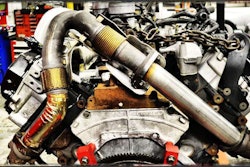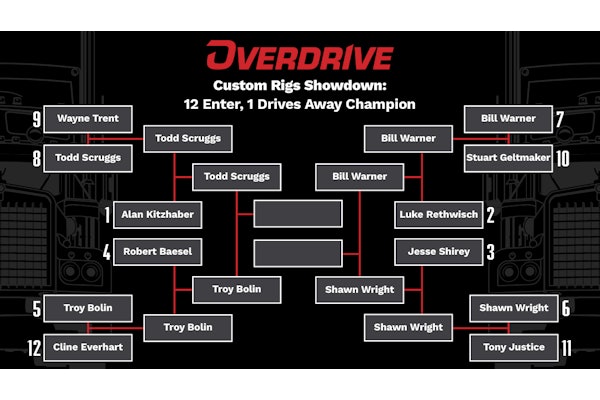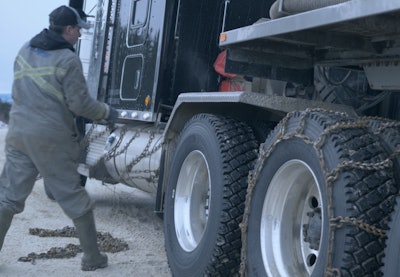
A powerful Nor'easter is forecast to develop late this week and into the weekend along the east coast, with a blizzard possible in New England bringing strong winds and heavy snow – the making of hazardous travel conditions.
It’s not just snow and ice but cold temperatures in general that can have a significant impact on tire performance.
Tire experts from Continental, Goodyear and Michelin all advise paying closer attention to tire inflation in cold weather and taking corrective action before heading out since lower temperatures lead to a drop in tire pressure, which can impact traction when it’s needed the most on snow and ice.
“When a pneumatic tire [a tire that uses air or any gas, such as nitrogen to inflate] cools, the pressure of the air or gas inside the tire will drop, even if the tire isn’t leaking air,” said Thomas Stacey, B2B product category manager at Michelin North America. “Heat expands and cold contracts air and other gases. Tires that are not at the proper pressure will not perform properly.”
But checking tire pressure in colder weather requires the right approach to ensure better results.
“One common mistake that we see is tire pressure is checked on a warm truck and then sent out into the cold, where it becomes underinflated,” said Rod Conner, head of technical customer services for Continental truck tires in the U.S.

“Tire pressure reduces 1 to 2 psi for every 10 degrees Fahrenheit,” Conner continued. “If a truck sits in a 60-degree shop in Wisconsin all night and the air pressure is 100 psi but is sent out on the road and the outside temp is 5 degrees, the tire pressure is now only around 85 psi. I have seen this exact scenario.”
[Related: Yokohama announces another price hike amid rising business costs]
Timing is everything and with that Thomas recommends checking tire pressure before driving.
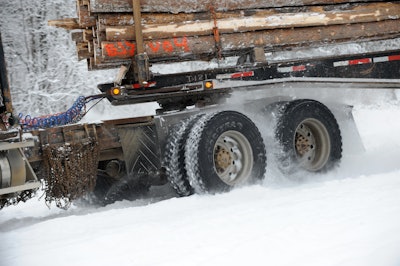 "Tire inflation management is something that Goodyear talks about year round, but it is even more important during cold winter months," said Goodyear commercial product marketing manager Dustin Lancy.Goodyear
"Tire inflation management is something that Goodyear talks about year round, but it is even more important during cold winter months," said Goodyear commercial product marketing manager Dustin Lancy.Goodyear
Use dependable gauges to get dependable results
“Always take care to use a properly calibrated gauge when verifying the pressure of a tire and you should not rely on the aspect of the tire,” Stacey continued. “If the tire is 20% below the recommended pressure, it must be considered flat. It should then be removed and inspected for punctures or other damage.”
Underinflated tires not only impede traction on icy and snow-covered roads, it can also take a swipe at the bottom line by lowering mpg and reducing tire casing life according to Goodyear commercial product marketing manager Dustin Lancy.
“Underinflation as little as 10 psi below the recommendation reduces fuel economy,” Lancy said. “The Tire Maintenance Council released a study not too long ago that found that consistent underinflation by up to 20% below the recommended levels can increase the rate of treadwear by 25%.
“So the best thing that you can do as a fleet manager or driver is to make sure that tire pressure is at the recommended levels because you're going to save overall on fuel economy,” Lancy continued. “Number two, you're going to have that better footprint on the road and number three you're going to get longer wear out of those products.”
[Related: Cooper Tires rolls out new long-haul commercial tire]
Avoid overinflating tires which can adversely effect traction and treadwear. If checking and adjusting air pressure inside a heated garage use an “air supply that is also at the higher room temperature,” Stacey said.
“In extreme cases, the manufacturer load and inflation tables for cold climate pressure correction should be used to ensure that the operating pressure and deflection of tires are adequate at the outside ambient temperature,” Stacey added.
Cold truth on rubber compounds
Besides lowering tire pressure, cold temperatures also impact tire traction which makes a stronger case for turning to tires designed for frigid weather.
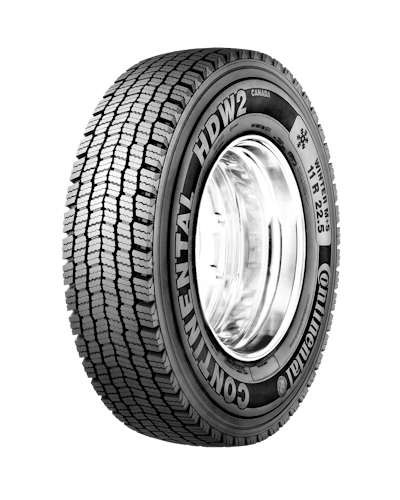 With more than 1,000 sipes, Continental's HDW2 is designed for extreme weather conditions from ice to deep snow.Continental
With more than 1,000 sipes, Continental's HDW2 is designed for extreme weather conditions from ice to deep snow.Continental
Maintaining driver confidence and a competitive edge is arguably more important than ever at a time when drivers are harder to come by and billboards abound with attorneys eager to capitalize on truck accidents.
“There are dedicated tires that utilize certain compounds in the tread to help maintain traction and grip below 45 degrees,” Lancy said. “A stiffer tread compound could result in less grip for that driver. Having a tire that is built for those types of conditions, drivers will have a lot more confidence and feel a lot better in that driver's seat if they know they have good tires on their vehicles so it's a safety perception piece as well for the drivers.”
While shopping for tires that work best in snow and ice, go beyond labels like the familiar three-peak mountain snowflake (3PMSF) symbol found on some tire sidewalls.
“The 3PMSF logo on commercial Class 8 truck tires should not be used to evaluate whether one tire has better winter traction performance than another,” Stacey said. “Instead, a commercial fleet should look for specific features that will give the tire long-lasting traction in winter conditions: an aggressive tread design with a high void ratio and channels to evacuate snow and slush, application-specific rubber compounds and full depth siping.”
Chains, socks and studs
Some freezing weather conditions may require some extra help from tire studs, snow chains or snow socks. Before using any of this equipment, check first with state and local laws, which are available online.
“Most states have guidelines on when tire chains and snow socks can be used,” Conner said. “From the tire perspective, chain damage can occur if the chains are not installed correctly, especially if they are too loose on the tire. It is also vital to ensure that each chain is in good working condition, with no loose or broken links.”
Keep up with weather patterns and check to see if the truck is headed in a region known for severe winter conditions where snow chains may be “required as determined by local law enforcement,” Stacey said.
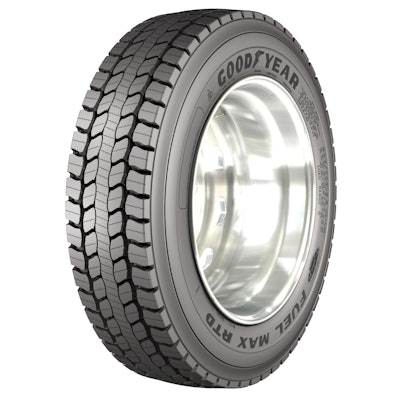 Goodyear's winter tire Fuel Max RTD features "an evolving tread design," said Goodyear commercial product marketing manager Dustin Lancy. "As the tire wears, the tread actually has different grooves and sipes that were not there when it was new to help give those traction features later in life."Goodyear
Goodyear's winter tire Fuel Max RTD features "an evolving tread design," said Goodyear commercial product marketing manager Dustin Lancy. "As the tire wears, the tread actually has different grooves and sipes that were not there when it was new to help give those traction features later in life."Goodyear
“Operators should make sure to follow chain manufacturers’ instructions for properly mounting the chains with the correct type and size to ensure safe operations,” Stacey said. “They should also refer to the tire manufacturers’ service manual for recommended directions for both speed and duration of use.”
Snow chain use should be kept to a minimum.
“Chains should only be utilized when necessary,” Stacey continued. “The possibility of damage to the tire from the chains will increase as driving speed and length of travel increase, as well as with use on dry pavement. As a rule, chains should be utilized only as long as required, and vehicle speeds should be kept relatively low.”
While studded tires are known for providing improved traction on ice, they shouldn’t be used on roads “that are not covered with ice, as they can increase braking distance, road noise and wear,” Stacey said.
When it comes to sourcing studded tires Conner advises a cautious approach.
“One of the drawbacks of studded tires is potential tire damage,” Conner said. “If the tire does not already have stud holes built into the tread, having someone install them can cause damage to the tire casing, for example by drilling too far down. This could not only damage the tire’s performance but would also eliminate any ability to retread it.”


